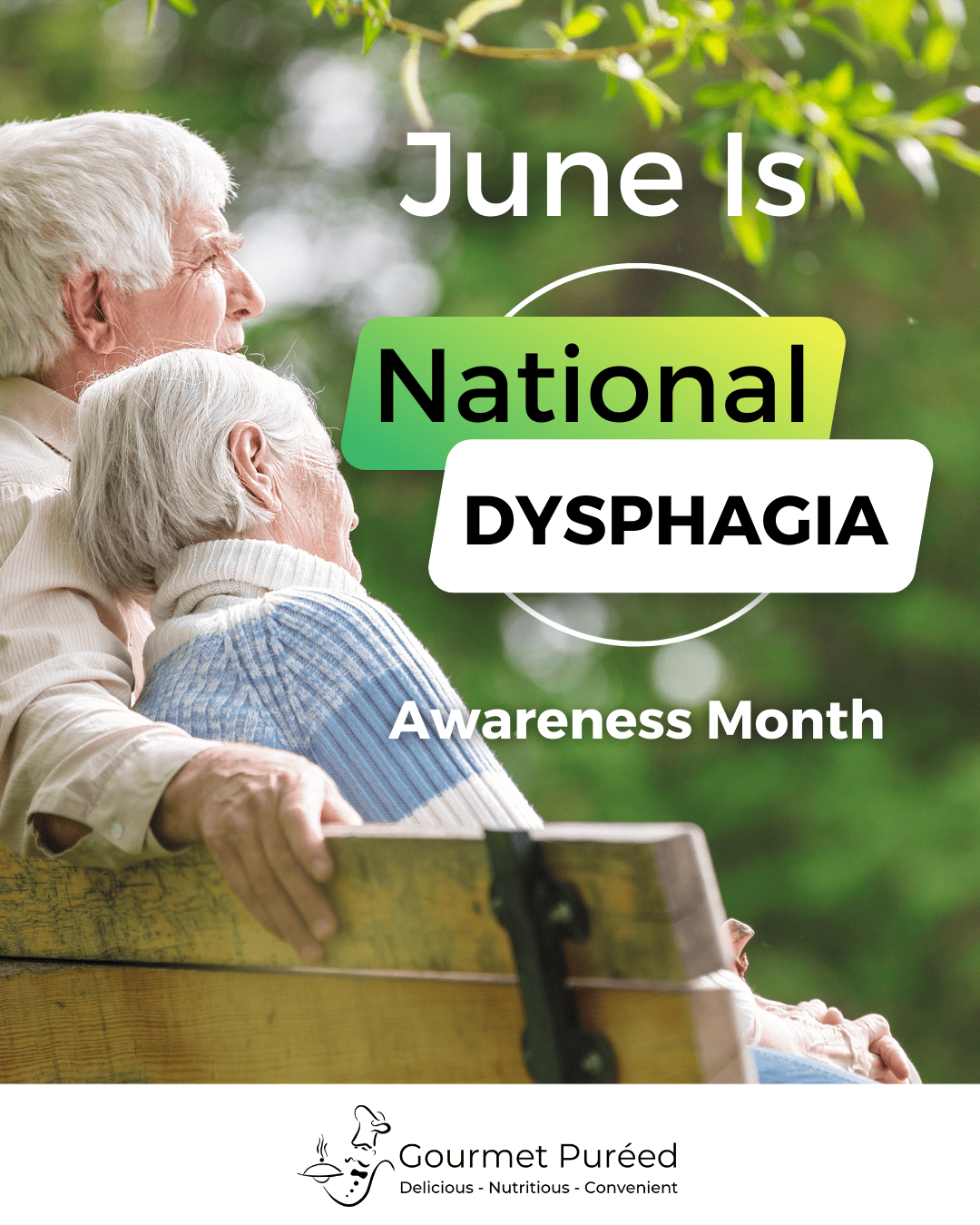MANY THANKS TO OUR FRIENDS AT THE NFOSD (NATIONAL FOUNDATION OF SWALLOWING DISORDERS) AND TIFFANY TURNER MS, CCC-SLP FOR THIS GREAT ARTICLE ON DYSPHAGIA.
Deciphering Dysphagia
Published 9.28.2016 by NFOSDadmin
Byline: Tiffany Turner, MS, CCC-SLP, Owner, Swallowing and Neurological Rehabilitation, www.tulsasnr.com. Tiffany founded a dysphagia focused outpatient center in 2014 to serve the northeastern Oklahoma region and fill a gap in her community, as she feels adult speech pathology services are often misunderstood and underutilized. She is also an author and publishes resources for other SLPs to use with their patients which have been downloaded by over 2,000 speech-language pathologists worldwide.
Dysphagia, or difficulty swallowing, affects up to 15 million adults in the United States. According to past publications, 1 in 25 people will experience some form of dysphagia in their lifetime, including 22% of those age 50 and older (ASHA, 2008; Bhattacharyya, 2014). People at the greatest risk for swallowing impairments include individuals who have had strokes, those with neurological conditions (such Parkinson’s disease), survivors of head and neck cancer, and the elderly. Despite the significant prevalence of dysphagia, this medical condition is often neglected, and many sufferers are never properly diagnosed or treated.
How Swallowing Works
There are three phases of swallowing. The first phase of swallowing is the oral phase, where food or liquid is manipulated and prepared to be swallowed (by chewing, forming the food into a cohesive unit in the mouth (a.k.a. a bolus). Next, in the pharyngeal phase, after the food or liquid passes through the mouth, it approaches two ‘tubes’ at the back of the throat- the esophagus (a passageway to the stomach) and the trachea (airway). There are several muscles that go to work to ensure the food then goes from the back of the throat down the esophagus rather than into the trachea (which leads to the lungs). When the muscles involved in swallowing are working properly, they close off and protect the airway to prevent food or liquid from entering the lungs. Lastly, the food/liquid then passes from the top to the bottom of the esophagus in the esophageal phase of swallowing. From the bottom of the esophagus, the food/liquid enters into the stomach.
Speech-language pathologists are the specialists who evaluate and treat impairments of the oral and pharyngeal phases of swallowing since the same general anatomy is involved for both swallowing and speech/voice. Esophageal phase dysphagia is often treated by an otolaryngologist or gastroenterologist depending on the specific impairment.
Symptoms and Complications
Dysphagia can be the result of muscle damage, nerve damage, or other causes and can occur at any phase of the swallow, so there are many different presentations of this condition depending on the underlying cause and specific areas affected. Some symptoms of oral or pharyngeal dysphagia could include the following:
- difficulty moving food from the front to the back of the mouth,
- difficulty chewing,
- food getting stuck in the mouth,
- difficulty swallowing certain foods/drinks,
- coughing or throat clearing while eating/drinking,
- feeling like foods/pills are getting stuck, and/or
- a wet vocal quality (e.g., a gurgling sound) after eating/drinking. When the pharyngeal swallowing mechanism isn’t functioning like it should, food or liquid can sometimes enter the trachea instead of the esophagus. This is referred to as aspiration. Everyone experiences occasional aspiration of trace amounts (that feeling when something goes down the wrong way and your body’s reaction is to cough). However, when aspiration is persistent and foreign material is entering the lungs, this can lead to very serious complications, such as aspiration pneumonia or even death.Swallowing experts have developed a short, 10-question, self-assessment survey developed to help patients communicate the signs and symptoms of their swallowing problem with their healthcare team called the Eating Assessment Tool (EAT-10). This assessment tool is not a replacement for tools already in use by the medical team, but can be used as a tool to help patients identify a swallowing problem. Problem identification is an early step in the path to a treatment plan and can result in improved outcomes. The following link will open up the survey. The survey can be taken online and printed out or it can be printed out and filled in on paper.http://www.surveymonkey.com/s/9D3LFJY Treatment OptionsWe know there are many things that can go wrong with swallowing and the consequences can be very serious, so what options are available for those living with dysphagia? Below are some of the most effective and widely used treatment techniques that speech-language pathologists can implement to help manage oral and pharyngeal dysphagia.
1. One common method of treatment involves exercises to strengthen and improve the functioning of the specific muscles that are negatively affecting the swallow. First, the speech-language pathologist will complete an instrumental assessment to determine the specific impairments; then, exercises will be prescribed to target those specific areas of deficit. Some patients are candidates for neuromuscular electrical stimulation and/or biofeedback training along with traditional exercises to promote more intensive treatment and in some cases more rapid muscle re-education.
- Another common approach involves education of compensatory strategies to decrease the risk of aspiration. For example, for some patients, tucking the chin downward while swallowing can help close off the airway and prevent aspiration. For other patients with more weakness on one side or the other, a head turn to one side may increase swallowing safety. A speech-language pathologist can teach specific and individualized postures and techniques to increase safety depending on specific impairments noted during instrumental assessment.
- A third option in dysphagia management involves diet texture modification. Certain food or liquid textures can be substituted to decrease aspiration risk. For example, thickened liquids flow more slowly than regular liquids and give the muscles more time to react and protect the airway, reducing the aspiration risk for some people. Some patients may need smoother textured foods if mastication or oral or pharyngeal residue poses safety risks. Diet consistency recommendations are very individualized based on the assessment findings. A last resort may involve a feeding tube and nothing by mouth (either temporarily or in some cases long-term) to prevent food/liquid from entering the airway if all oral intake appears unsafe.If you feel that you or a loved one may be suffering from dysphagia, discuss your symptoms with your physician and seek a speech-language pathology consultation. Without treatment, dysphagia can be a debilitating condition, but thankfully quality of life can be improved greatly with proper and timely diagnosis and treatment. Early intervention results in the best treatment outcomes, so seeking treatment at the first sign of an impairment is very important. Additional NFOSD Dysphagia ResourcesHead & Neck CancerHow Aging Affects the SwallowParkinson’s DiseasePediatric Swallowing DisordersStroke & Dysphagia Statistical ReferencesASHA Communication Facts: Special Populations: Dysphagia- 2008 Edition. American Speech-Language-Hearing Association, 2008.Bhattacharyya, N. (2014). The prevalence of dysphagia among adults in the United States. Otolaryngology–Head and Neck Surgery, 151, 765–769.




